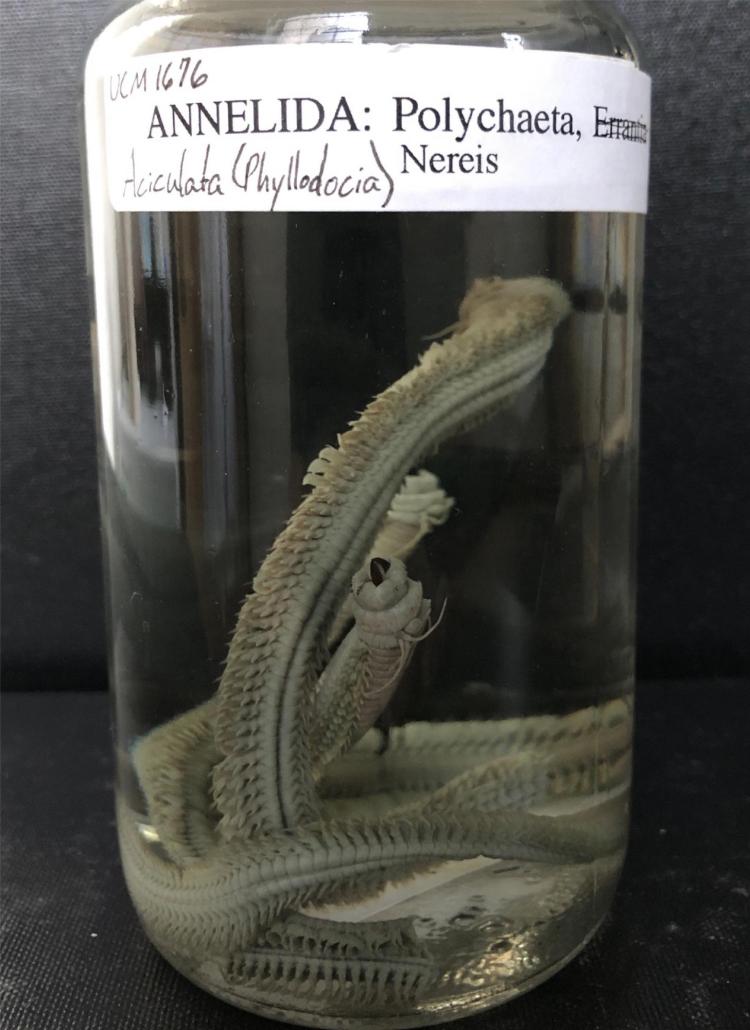The CU Museum is closed. We will be reopening soon.
During this time, collection visits will be available by appointment and other special access requests will be considered on a case-by-case basis.
Please email cumuseum@colorado.edu for more information.
Clam worm

Clam worms have characteristic pincher teeth made of a strong lightweight material. Their pharynx can be everted to expose their strong jaws and two long conical teeth. Despite these intimidating features this species uses their large teeth to eat seaweed and other small worms. In fact, this worm is mostly harmless, and is used often as fish bait. The bristles that these worms use for locomotion and to burrow can also be a defense mechanism against their many predators and touching the bristles of some species can cause a painful burning sensation.
Polychaetes are incredibly diverse and represent the uniqueness of the ecosystems in which they have been adapted.
UCM 1676

